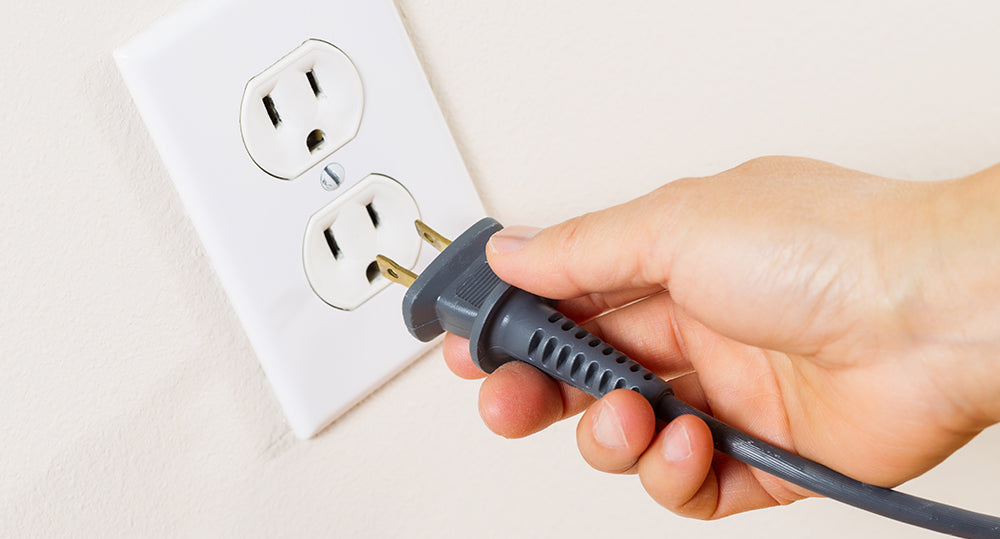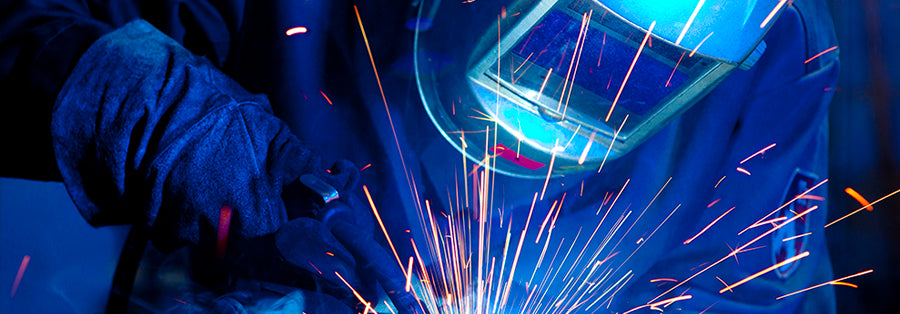Power requirements have never been demonstrated better than 1989’s Christmas Vacation. As Clark Griswald excitedly goes to plug in his elaborate Christmas lights display, his joy turns to dread as he realizes that he’s vastly miscalculated his power situation. While this indirectly leads to a Santa decoration being launched thousands of feet in the air, the basic concept of this situation is not too far from the same experiences that many welders have. In this article, we’ll explain how to properly understand and calculate your welding electrical power needs and how they compare to your home or workshop’s setup.
Using a 120-Volt Plug
Generally, your biggest power needs are going to be your heavy-duty equipment. For welders, this is often your welding machine and plasma cutter. Now it’s important to understand that many welding machines offer multiple levels of power requirements depending on the type of plug you have access to.

Let’s look at the popular Lincoln Square Wave TIG 200. This machine can be plugged into a 120-volt socket or a 240-volt socket. 120-volt is the average electrical socket you’ll find just about anywhere in America. This is what you use for powering the vast majority of electrical devices, from cellphone chargers to toasters.
By looking at the specs sheet for the Square Wave TIG 200, we can see it has two separate sections: One for running the machine on a 120-volt plug, and another row for the 240-volt plug. Looking at the 120-volt row, we can see that the Square Wave TIG 200 can output up to 125 amps. But wait a second! Isn’t the “Square Wave 200” called such a name because of its ability to produce up to 200 amps? Yes, but not on a 120-volt plug. While your average household socket is much more convenient and common, it isn’t able to supply as much power.
Using a 240-Volt Plug
Quick note: In North America, the terms 220V, 230V, and 240V all refer to the same system voltage level.
While many welding machines can be plugged into 120 volts or 240 volts, you generally won’t be able to access the machine’s full potential (power output) unless you’re using a 240-volt plug. Let’s go back to our Lincoln Square Wave example:
In order to get up to 200 amps, you’ll need to run the Square Wave off a 240-volt plug. These types of sockets are only installed in homes for certain applications. For instance, your oven often runs off of a 240-volt plug, as well as most clothing dryers. Besides these two appliances, 240-volt sockets aren’t generally installed anywhere else unless explicitly done so (such as for a welding workshop). If you’re looking at possible workshop spaces or considering modifying your garage or workshop, a 240-volt socket is definitely something to take into consideration. These sockets are also designed to handle more amps.

Single-Phase Power vs. 3-Phase Power
The vast majority of power outlets are known as single-phase power supplies. Most consumer-grade welding equipment run on a single-phase power supply (a.k.a. your normal 120-volt or 240-volt outlet). However, if you work with industrial equipment, you’ll need to check for 3-phase power requirements. When it comes to heavy-duty machines, even a normal 240 outlet doesn’t cut it.
Three-phase outlets generally have at least 4 slots. The benefit of these monsters is that they can transmit three times as much power as a single-phase power supply. That’s a lot of juice. If you’re purchasing an industrial machine, it’s critical to check which type of phase is required.
For example, let’s look at the Miller Invision MPA MIG welding machine. This heavy-duty juggernaut is an incredible machine, but it requires a different level of power. For the 352 version, it can work on both single-phase and three-phase outlets (see spec sheet example above). It’s important to note that the machine will be somewhat limited on a single-phase outlet though.
For the 450 version of the Miller Invision MPA, you can see that it requires a 3-phase outlet and will not run at all on a single-phase outlet. You must make sure you have a 3-phase power supply to run this machine.
Plasma Machines
Many plasma machines require a 240-volt socket and will not work at all with 120 volts. For instance, the Hypertherm Powermax45 XP requires a 240-volt socket that’s able to draw up to 39 amps. Before you purchase a plasma welder, make sure you check the power requirements.
Who Needs a Power Grid?
For some welders, plugging into a workshop or garage power grid isn’t an option. This is when a generator or welder/generator comes into play. Most of Lincoln and Miller’s welder generators come with at least one 240-volt socket. This allows you to not only use the welder built right into the generator, but you can also run a plasma machine off the same generator—or even run a separate 240-volt welding machine.
Especially for welders who work in the field, an engine-driven welder or a generator might be the only way to meet your power needs. Just make sure you check the specs before you buy. You’ll want to be sure it has the right type of plugs you need and can handle the number of amps you require. For more information about calculating generator power requirements, check out our in-depth article here.
When you purchase at Welding Supplies from IOC, our experts are always able to answer any questions you have about power requirements or machine specs. That’s something you’ll never find at a lot of these online stores. It’s part of our commitment to having the best customer service in the industry. We also offer the best prices and brands. Check out our complete line of equipment and gear here.








